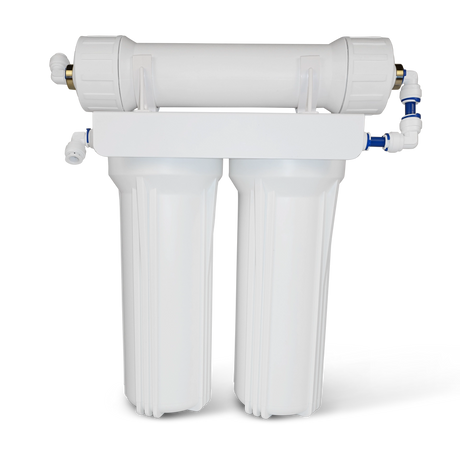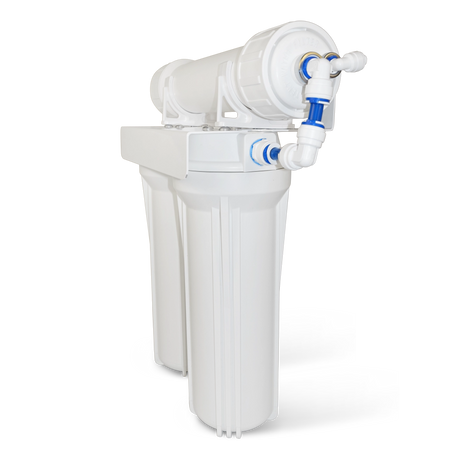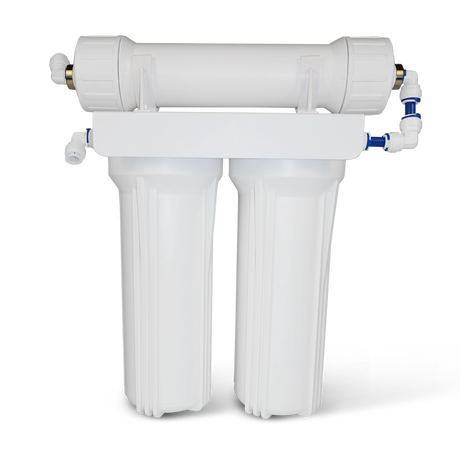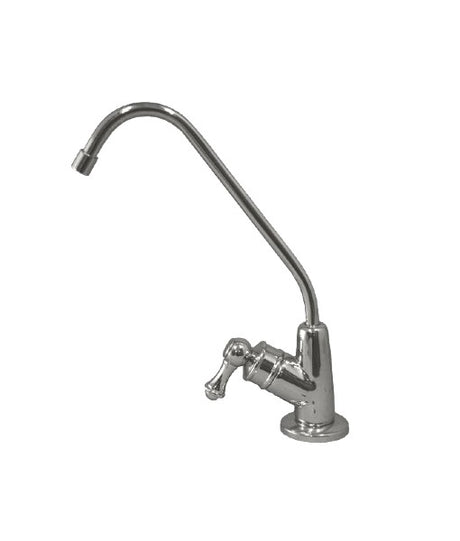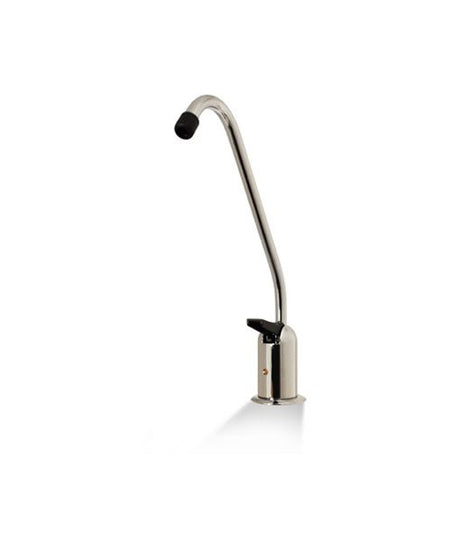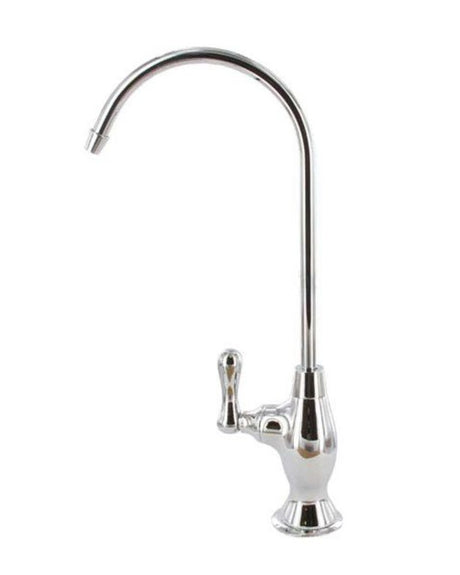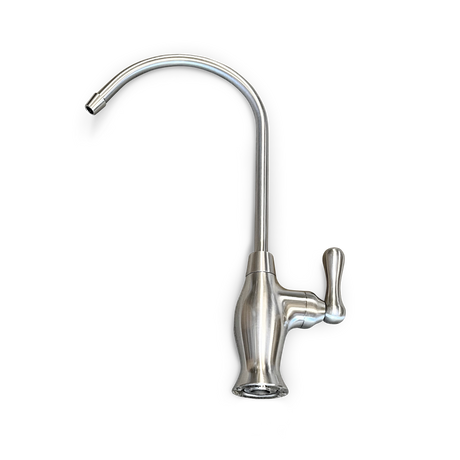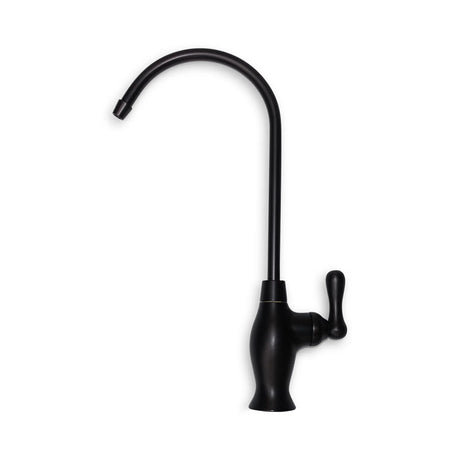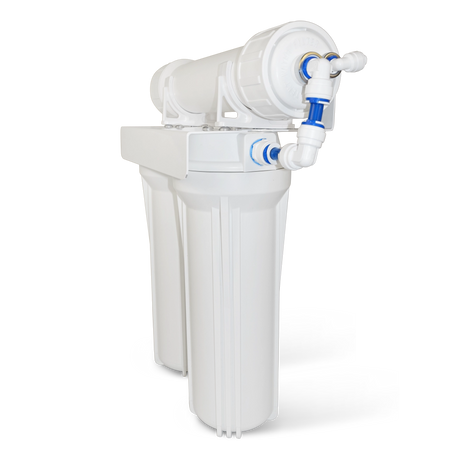Ultrafiltration vs Reverse Osmosis: Which Water Purification Process is Best for You?

Is ultrafiltration the same as reverse osmosis?
No. Ultrafiltration (UF) and reverse osmosis (RO) are powerful and effective water treatment systems but UF differs from RO in a few significant ways:- Filters out solids / particulates as small as 0.02 micron including bacteria. Does not remove dissolved minerals, TDS, and dissolved substances in water.
- Produces water on demand - no storage tank required
- Does not produce reject water (water conservation)
- Operates smoothly under low pressure - no electricity required
What is the difference between UF and RO?
Type of membrane technology
Ultrafiltration only removes particulates and solids, but it does so on a microscopic level; the membrane pore size is 0.02 micron. Taste-wise, ultrafiltration does retain minerals which affects how the water tastes. Reverse osmosis eliminates virtually everything in water including the majority of dissolved minerals and dissolved solids. An RO membrane is a semi-permeable membrane that has a pore size of approximately 0.0001 micron. As a result, RO water is pretty much “tasteless” since it is free from minerals, chemicals, and other organic and inorganic compounds. Some folks prefer their water to have minerals in it (which UF provides), and some folks prefer their water to be entirely pure and tasteless (which RO provides). Ultrafiltration has a hollow fiber membrane so it’s basically a mechanical filter at a super fine level that stops particulates and solids. Reverse osmosis is a process that separates molecules. It uses a semi-permeable membrane to separate inorganics and dissolved inorganics from the water molecule.Storage tank
UF produces water on demands that goes straight to your dedicated faucet - no storage tank required. RO requires a storage tank because it makes water very slowly. A storage tank takes up space under a sink. Additionally, RO tanks can grow bacteria if not properly sanitized regularly. You should sanitize your entire RO system including tank at least once per year.Wastewater / Reject
Ultrafiltration does not produce waste water (reject) during the filtration process.* In the reverse osmosis, there is cross-flow filtration through the membrane. This means that one stream (permeate / product water) goes to the storage tank, and one stream with all the contaminants and dissolved inorganics (reject) goes to drain. Typically for every 1 gallon of RO water produced, 3 gallons are sent to drain.Installation
Installing an RO system requires making a few connections: the feed supply line, drain line for the reject water, a storage tank, and an air gap faucet. Installing an ultrafiltration system with a flushable membrane (the latest in UF technology *) requires making a few connections: the feed supply line, drain line to flush the membrane, and to a dedicated faucet (drinking water applications) or outlet supply line (whole house or commercial applications). To install an ultrafiltration system without a flushable membrane, just connect the system to the feed supply line and to the dedicated faucet (water for drinking applications) or outlet supply line (whole house or commercial applications).Drinking Water Faucet
With UF and RO for drinking water, both require a dedicated faucet – you can’t run it through your main fixture. With RO, an air gap faucet is recommended as it prevents back-flow.Cost
The Premiere PS-PURUF ultrafiltration drinking water system costs $365 The PS-PURUF replacement filters are $99 annually, and the UF membrane is $129 which is replaced once every 2 - 3 years. Approximate replacement filter and membrane costs of Premiere PS-PURUF for 5 years: $426. There are no additional running costs for waste water or electricity. The HydroGuard HDGT-45 reverse osmosis system costs $360. The HydroGuard replacement filter kit is $79.50 annually, and the HydroGuard RO membrane is $79.50 which is replaced once every 2 years. Approximate replacement filter and membrane costs of HydroGuard HDGT-45 for 5 years: $397.50. There are additional running costs for the electricity and extra water sent to drain (again, typically 3 gallons of water goes to drain per 1 gallon of RO water).
(Prices as of 9/5/2024)
Additional Filters for System
Although the stand-alone technology of ultrafiltration and reverse has been discussed, additional filters can be added to UF and RO systems for additional filtration capabilities. For example, carbon block post-filters on an ultrafiltration system target organic compounds like lead, chlorine, chloramine, VOCs, and chemicals that ultrafiltration would not do on its own. It's also possible to add an alkaline post-filter to raise pH to 8.5 – 10, increase the negative oxidation reduction potential, and add organic and natural calcium, magnesium, sodium, and potassium ions. Likewise, carbon block filters on an RO system can target organic compounds; a remineralization filter can add minerals to the water for health and taste; or alkaline cartridge can alkalize the water. * The latest in ultrafiltration technology is a flushable UF membrane. Although no reject water is produced during the ultrafiltration process, a very small amount of water is used when the flush valve is opened to clean the membrane. The benefits of this flushable UF membrane means that it has a lifespan of 3 - 5 years, versus a 1 year filter life in non-flushable UF membranes.Can UF reduce TDS?
Ultrafiltration does not eliminate dissolved solids or TDS dissolved in water; it only reduces and removes solids / particulates. UF may reduce some total dissolved solids (TDS) incidentally since it is ultrafine filtration, but as a process ultrafiltration does not remove dissolved minerals, dissolved salts, dissolved metals, and dissolved substances in water. If your incoming water has a high TDS level (over 500 ppm) ultrafiltration is not recommended; only reverse osmosis will be effective to get the TDS down.Which is better RO or UF?
Reverse osmosis and ultrafiltration are the most effective and powerful systems available. Ultimately which is better is a personal preference based on your water conditions, taste preference, space, desire to conserve water, water pressure, and more.Drinking Water Systems: Ultrafiltration versus Reverse Osmosis
Here are some of the big questions to ask yourself in deciding whether an ultrafiltration or reverse osmosis drinking water system is best for you:- What's the TDS of your water? If your incoming water has a high TDS count (over 500 ppm) ultrafiltration is not recommended; only reverse osmosis will be effective to get the TDS down.
- Do you like the taste of minerals in your water for drinking? (If yes: ultrafiltration). Some people think RO water does not taste of anything, and others think it tastes flat and/or is slightly acidic - how does it taste for you and is that okay?
- How much space do you have under your sink - is there room for a storage tank? A 4 gallon storage tank is usually about 16″ tall and has a diameter of around 12".
- What's your water pressure? RO needs a minimum of 50 psi to function properly - if you don't have 50psi you'll need a booster pump. Ultrafiltration works smoothly at low pressure.
- Do you have a preference about wastewater? For each one gallon of RO water, about 3 gallons goes to the drain. Ultrafiltration produces no wastewater.
Whole House Filtration Systems: Ultrafiltration versus Reverse Osmosis
Ultrafiltration has significant benefits over reverse osmosis for whole house water filtration systems. Having a whole house RO is not usually recommended or the most sensible option. Let's put it this way: RO produces water much more slowly and can't keep up with the on-demand water requirements of an entire home. But most significantly, an RO purifying all the water for your home is overkill. Other filtration processes can take care of your water issues, without the expense and hassle of a whole home RO system. If you really want RO water, the best option is a whole house water filter system plus an RO drinking water system. Here are some of the big questions to ask yourself in deciding on if a whole house ultrafiltration system is suited for you:- What's the TDS of your water? If your incoming water has a high TDS count (over 500 ppm) ultrafiltration is not recommended.
- Are you on well water? Ultrafiltration is great for well water (keep reading).
- What's in your water? What contaminants are you worried about? Ultrafiltration filters out solids and particles as small as 0.02 micron such as sediment, lead, bacteria, cysts, protozoa, and viruses. That's why ultrafiltration is great for wells.
- Does your water have chemicals, lead, and/or lots of particulates? There's pre- and post-filters to accompany ultrafiltration to take care of these issues, and/or prolong the life of your UF membrane.
- Does you water have both iron AND tannins? If so, you'll need a separate pre- treatment filter system to remove the iron first. Iron AND tannins is a tricky contaminant combination that ultrafiltration systems will not be able to handle on their own.
- What gallon per minute (GPM) service will you need? A whole house ultrafiltration system produces about 8 gallons per minute. If you need more, you can get a storage tank, or "stack" multiple systems (i.e., plumbing two ultrafiltration systems - 8 GPM flow rate each - side by side will provide 16 GPM flow rate).
- What flow of water (GPM) do you use?
Commercial Systems: Ultrafiltration versus Reverse Osmosis
Ultrafiltration is sometimes less-known when it comes to light commercial and commercial filtration. UF is a powerful and effective option for both light commercial and commercial filtration. Here are some of the big questions to ask yourself in deciding between UF and RO for commercial applications:- What's the TDS of your water? If your incoming water has a high TDS count (over 500 ppm) ultrafiltration is not recommended.
- What gallon per minute (GPM) service will you need? Just because an RO system has a high capacity, the gallon capacity is expressed as gallons per day (GPD). That means the max it can produce over an entire 24 hour period if running continually. You'll also need a storage tank. Ultrafiltration system produces about 8 gallons per minute (that's up 11,520 gallons per day if run continually). If you need a higher service rate, you can get a storage tank, or "stack" multiple systems (i.e., plumbing two ultrafiltration systems - 8 GPM flow rate each - side by side will provide 16 GPM flow rate).
- What's in your water? Reverse osmosis removes virtually everything in water; and ultrafiltration removes solids and particles as small as 0.02 which is microscopic filtration without the drawbacks of RO. Sometimes reverse osmosis is an expensive, inefficient way to filter what is (and is not) actually in your water - it's effectively overkill.
- What purity of water do you actually need? Again, RO does remove virtually everything in water, but if 0.02 micron filtration will take care of the job, it's a much better alternative to RO.
- How often do you want to change filters? How often can you afford to replace filters? Reverse osmosis membrane and filter life is entirely dependent on what is in your water and how quickly it fills up. Likewise with ultrafiltration, however the latest and greatest in ultrafiltration technology is a flushable UF membrane. The benefits of this flushable UF membrane means that when the membrane gets full, you turn a valve to flush the contaminants. RO can't compete with this.


